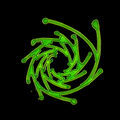Template:Selected anniversaries/October 4: Difference between revisions
No edit summary |
No edit summary |
||
| Line 27: | Line 27: | ||
||1881: George Constantinescu born ... scientist, engineer and inventor. During his career, he registered over 130 inventions. He is the creator of the theory of sonics, a new branch of continuum mechanics, in which he described the transmission of mechanical energy through vibrations. Pic. | ||1881: George Constantinescu born ... scientist, engineer and inventor. During his career, he registered over 130 inventions. He is the creator of the theory of sonics, a new branch of continuum mechanics, in which he described the transmission of mechanical energy through vibrations. Pic. | ||
||1892: Hermann Glauert born ... aerodynamicist and author. | ||1892: Hermann Glauert born ... aerodynamicist and author. His book '''The Elements of Aerofoil and Airscrew Theory''' was the single most important instrument for spreading airfoil and wing theory around the English speaking world. Pic search yes: https://www.google.com/search?q=Hermann+Glauert&oq=Hermann+Glauert | ||
||1895: Richard Sorge born ... journalist and spy. | ||1895: Richard Sorge born ... journalist and spy. | ||
| Line 37: | Line 37: | ||
||1904: Cyril Stanley Smith born ... metallurgist who in 1943-44 determined the properties and technology of plutonium and uranium, the essential materials in the atomic bombs that were first exploded in 1945. Smith already then had 15 years of experience as a research metallurgist with the American Brass Co., during which time he studied properties of alloys and their microstructure. In WW II, he joined the Los Alamos Laboratory at its inception (1943). The properties and technology of plutonium had to be conducted with extremely limited quantities of available material. Smith and his group found it was unique, with five different allotropic forms with huge density differences between them. Postwar, he organized the Institute for the Study of Metal at the Univ. of Chicago. Pic. | ||1904: Cyril Stanley Smith born ... metallurgist who in 1943-44 determined the properties and technology of plutonium and uranium, the essential materials in the atomic bombs that were first exploded in 1945. Smith already then had 15 years of experience as a research metallurgist with the American Brass Co., during which time he studied properties of alloys and their microstructure. In WW II, he joined the Los Alamos Laboratory at its inception (1943). The properties and technology of plutonium had to be conducted with extremely limited quantities of available material. Smith and his group found it was unique, with five different allotropic forms with huge density differences between them. Postwar, he organized the Institute for the Study of Metal at the Univ. of Chicago. Pic. | ||
||1904: Carl Josef Bayer dies ... chemist and academic. | ||1904: Carl Josef Bayer dies ... chemist and academic. Pic search yes: https://www.google.com/search?q=Carl+Josef+Bayer&oq=Carl+Josef+Bayer | ||
||1906: Mary Celine Fasenmyer born ... mathematician. | ||1906: Mary Celine Fasenmyer born ... mathematician. | ||
Revision as of 09:43, 25 April 2019
1903: Physicist, inventor, and academic John Vincent Atanasoff born. He will invent the Atanasoff–Berry computer, the first electronic digital computer.
1947: Physicist and academic Max Planck dies. He made many contributions to theoretical physics, and earned fame as the originator of quantum theory.
1957: Clock Head 2 stops math criminals from interfering with the launch of Sputnik 1.
1957: Space Race: Launch of Sputnik 1, the first artificial satellite to orbit the Earth.
2006: Steganographic analysis of the Superimposed Fraunhofer stamp reveals "seven hundred to eight hundred kilobytes" of previously unknown Gnomon algorithm functions related to color. These functions will quickly find application in the detection and prevention of crimes against light.
2018: Green Spiral 5 voted Picture of the Day by the citizens of New Minneapolis, Canada.





